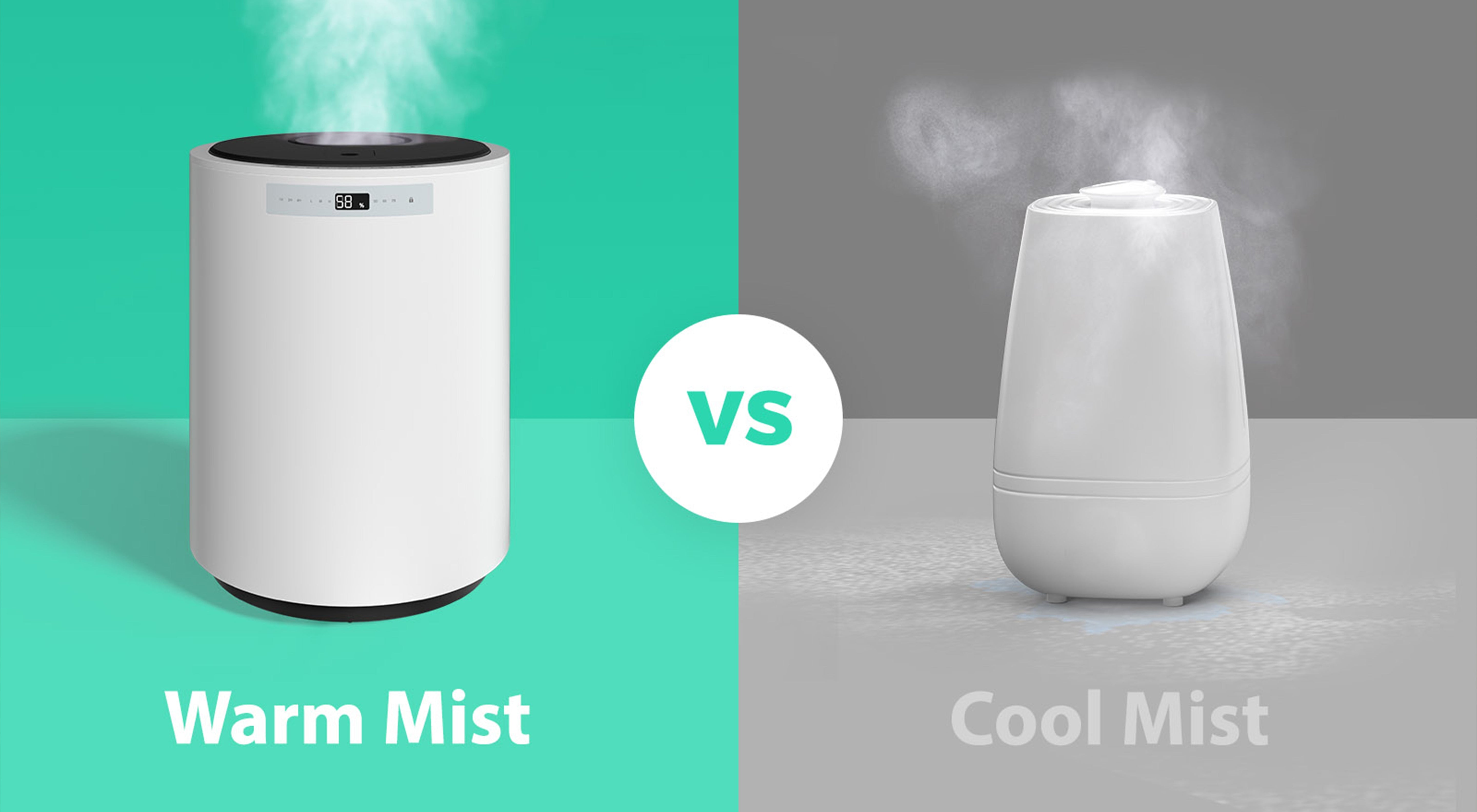If you want to alleviate allergy symptoms, common cold symptoms, and issues like dry skin and chapped lips caused by dry winter air, understanding the differences between cool mist and warm mist humidifier is key to finding the best humidifier for you and your family.
"Humidifiers can indeed change the conditions for allergy sufferers, especially during the dry winter months. By adding extra moisture to the indoor environment, humidifiers can relieve various allergy symptoms and quickly ease issues like dry skin, nasal congestion, itchy throat, and nasal inflammation," explains the Department of Otolaryngology and Allergy at the University of Pennsylvania.
There are two main types of humidifiers: cool mist and warm mist humidifier. Understanding the differences between cool mist and warm mist humidifiers is crucial since both have their pros and cons. Below, we will reveal the differences so you can choose the best humidifier based on your specific needs.
What is a Humidifier?
A humidifier is a device used to increase indoor air humidity. It works by releasing water vapor into the air, making dry air more humid and thus enhancing indoor relative humidity. Humidifiers are typically used in dry seasons or climates and can help relieve various discomforts caused by dry air, such as dry skin, dry throat, nasal dryness, and coughing. The EPA recommends maintaining indoor humidity levels between 30% and 50% for optimal comfort, effectively preventing health issues associated with overly damp or dry environments.

Warm Mist Humidifier
A warm mist humidifier works by heating water to produce steam, which is then released into the air, boosting humidity levels. The warm mist humidifier uses an internal heating element to boil water, creating warm mist or steam that helps increase indoor humidity. According to the EPA, these humidifiers pose less risk of spreading bacteria into the air. This type of humidifier is particularly suitable for cold seasons because it not only increases humidity but also provides an extra sense of warmth throughout the home.
Warm mist humidifier pros:
- Germ-killing Effect: Warm mist humidifiers effectively kill bacteria and viruses by heating the water, making them suitable for environments requiring high hygiene standards, such as hospitals or homes with immunocompromised individuals.
- Soothing Respiratory Issues: The warm steam can help soothe the respiratory tract, alleviating coughs, nasal congestion, and bronchitis symptoms, especially during the cold season.
- Quiet Operation: Because they don’t require a fan, warm mist humidifiers usually operate more quietly than cool mist ones, making them ideal for bedrooms or quiet spaces.
- Perfect for Winter: During cold winters, the warm mist humidifier not only increases humidity but also adds a slight warmth to the room, enhancing comfort.
Warm mist humidifier Cons:
- High Power Consumption: Warm mist humidifiers consume more energy due to the need to heat water, potentially increasing electricity bills over long periods.
- Burn Risk: The hot water and steam in warm mist humidifiers pose a burn risk, particularly in homes with children or pets, necessitating extra caution during use.
- Requires Regular Cleaning: Although heating the water helps reduce bacteria, mineral deposits can still accumulate within the unit, requiring regular cleaning to prevent buildup and damage.
Cool Mist Humidifier
A cool mist humidifier is a device that converts water into tiny droplets and releases them into the air to increase humidity. It uses ultrasonic vibrations or a fan to atomize water into fine mist without heating it.
Cool mist humidifier pros:
- Low Power Consumption: Since they do not heat water, cool mist humidifiers consume less power, making them more energy-efficient for long-term use.
- Fresh Air: They can be used in summer to provide cool, moist air, relieving discomfort caused by high temperatures.
- Safety: One of the most significant advantages of cool mist humidifiers is safety. Since they do not heat water, there is no risk of burns, making them suitable for homes with children or pets.
Cool mist humidifier cons:
- Requires Regular Cleaning: Cool mist humidifiers are prone to bacteria and mold growth, necessitating regular cleaning to prevent air contamination, especially for allergy or asthma sufferers.
- May Produce White Dust: If hard water is used, cool mist humidifiers may release mineral particles that form white dust, affecting air quality. The solution is to use distilled water or install a filter.
-
Humidity Control Needs Caution: Excessive humidity can lead to mold and dust mite growth, so using a hygrometer to monitor humidity levels is recommended.
Which Humidifier is Better: Warm Mist or Cool Mist?
Both cool mist and warm mist humidifiers have their advantages. Choosing the right type for your home should depend on your specific needs. Warm mist humidifier is typically preferred in winter, especially when you have a cold, cough, or nasal congestion, as the warm steam not only provides comfort but can also make your home feel warmer. In contrast, cool mist humidifier is favored for their year-round usability and higher safety. Each type of humidifier has its unique benefits, but regardless of the type chosen, appropriately increasing air humidity can significantly enhance home comfort.








